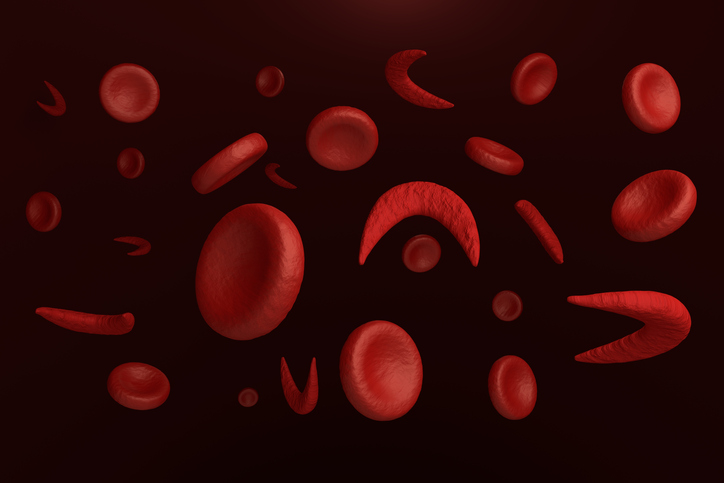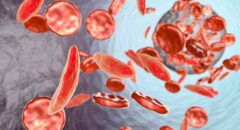 When you look at the sickle cell disease (SCD) numbers in the United States, you’ll find people of African descent at the top. Approximately 1 out 13 Black babies are born with the sickle cell trait, and 1 out of every 365 Black babies are born with sickle cell disease.
When you look at the sickle cell disease (SCD) numbers in the United States, you’ll find people of African descent at the top. Approximately 1 out 13 Black babies are born with the sickle cell trait, and 1 out of every 365 Black babies are born with sickle cell disease.
Sickle cell disease affects the red blood cells of the body and blocks the normal blood flow which causes extreme pain and damage to the kidneys, liver, lung , spleen and eyes. Dr. Kevin Williams, Chief Medical Officer for Rare Disease at Pfizer, spoke with BlackDoctor.org about the many complications and ways to manage sickle cell disease.
BlackDoctor.org: What complications does sickle cell disease pose the most for Black people?
Dr. Williams: SCD affects practically every organ of the body. The pain “crises” or episodes are the most common manifestation. Some of the other complications often seen are: strokes, acute chest syndrome, avascular necrosis of joints, splenic infarctions leading to functional asplenia and splenic sequestration. While the majority of people with sickle cell disease are of African descent, the disease affects many different ethnic groups. It is common in people of Indian, Middle Eastern, Hispanic, and Mediterranean ethnicities.
BlackDoctor.org: What is the correlation between iron overload and sickle cell disease?
Dr. Williams: SCD patients frequently get blood transfusions (either due to the anemia or sometimes, due to the need to reduce the amount of sickled RBCs in circulation.) One of the side effects of frequent blood transfusions is iron overload. Excess iron commonly accumulates in the liver, pancreas, heart and endocrine organs which leads to fibrosis/cirrhosis of the liver; a particular kind of diabetes; cardiac issues; joint pains; hypogonadism; bronzing of the skin, etc. These add to the complications already being caused by SCD.
BlackDoctor.org: Why do Black people suffer from sickle cell the most?
Dr. Williams: The gene for sickle hemoglobin (HbS) is found in people of African (especially West Africa); Arab; Indian and Hispanic descent. While the relative frequency of the HbS gene varies in each of these populations, the frequency of HbS is the highest in West Africa. Since historic immigration to the U.S. has been from West Africa, in the US, Blacks make up 90% of the SCD population.
BlackDoctor.org: How can people with sickle cell ease their complications?
Dr. Williams: People living with SCD should seek routine health care so that they can be monitored for possible complications. They are encouraged to maintain a healthy lifestyle with appropriate nutrition, exercise and maintaining good hydration. Since negative emotions and stress can also trigger pain episodes in some people with SCD, they should take preventive measures to reduce stress and keep a positive outlook.
BlackDoctor.org: Any new breakthroughs in the field of sickle cell disease?
Dr. Williams: Historically, penicillin prophylaxis; use of transcranial Doppler/MRI to monitor for potential stroke; use of regular/ scheduled blood transfusions and use of hydroxyurea prophylaxis – have all been interventions that have impacted the survival/rate or complications of SCD (at least in select sub-populations). However, the morbidity and mortality from SCD still continue to be high. Currently, there are several compounds in clinical trials for SCD for both acute treatment and prophylaxis. Hopefully, some of them may develop into approved treatments for SCD.
Clinical trial participation is vital to bring new medicine to people in need. More than half of trials in SCD have failed because the developer of the medicine wasn’t able to recruit enough patients to complete the clinical trials to evaluate whether the medicine was safe and effective. In fact, historically, of the terminated trials in SCD, 63 percent were due to failure to meet enrollment targets. Pfizer is currently working to develop treatments for sickle cell disease and its complications. The company has a Phase I program in sickle cell anemia, and is also partnering to develop a potential therapy to address vaso-occlusive crisis, one of the most painful and disruptive symptoms of sickle cell disease, which is now in Phase III clinical testing.








